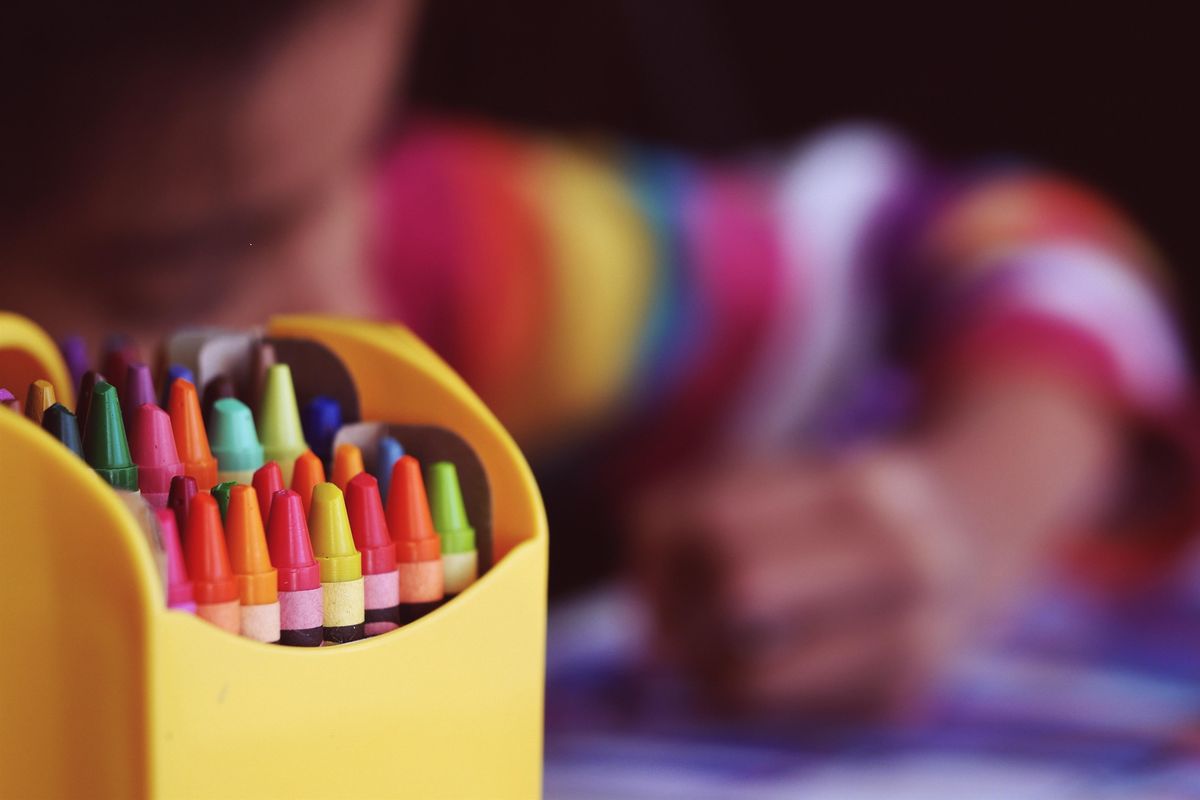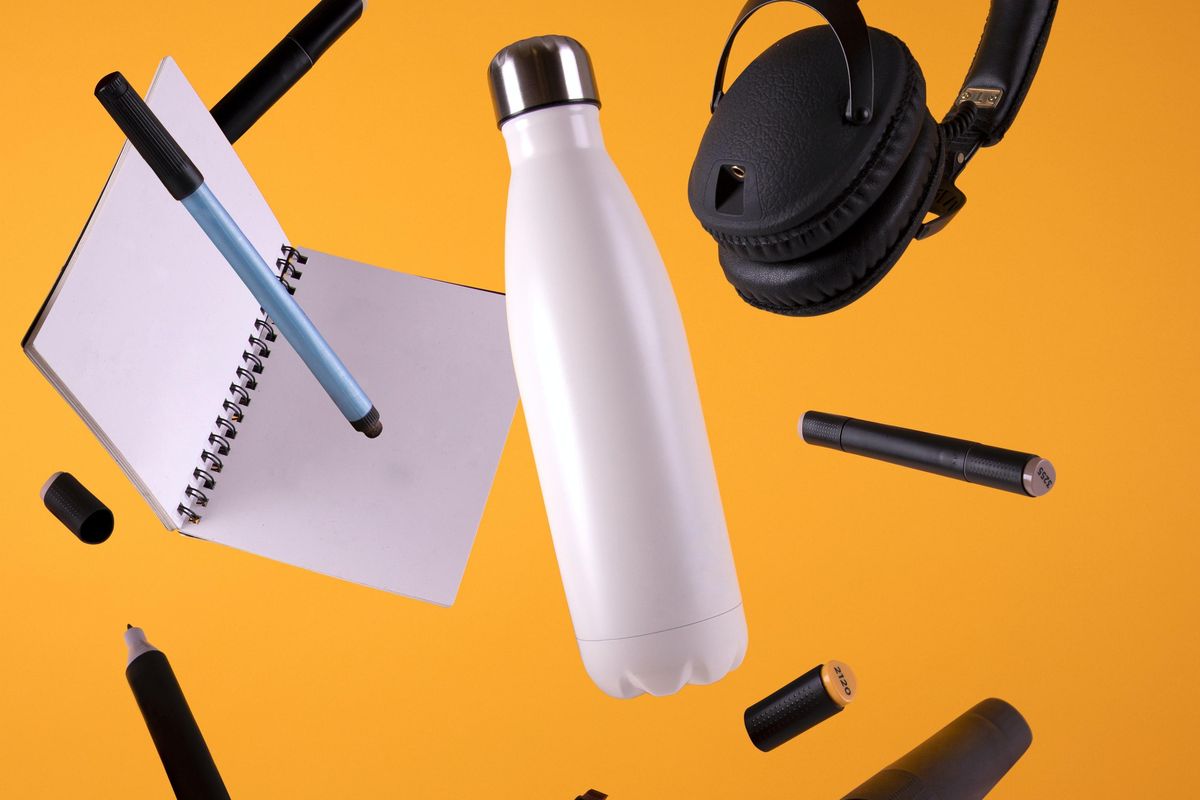Why back-to-school lists are so long and specific. And what's up with the 3 dozen glue sticks?
I just need someone to tell me: Are they eating the glue sticks?!

It's back-to-school time (yaaassss!), but that means it's also the time when you have to tackle those super-long, super-specific school supply lists (uggghhhh!).
You know what I'm talking about — the 15-plus-items-long list of things your kids need for school.
As a bonus, they're often brand-name specific. Seriously. Because Elmer's glue is apparently just that different from generic store brand glue.
Based on the venting ( "OMG, everyone is sold out of pre-sharpened Dixon Ticonderoga #2 pencils!") and cries for help I'm seeing from my fellow parents on social media ("Where did you find three wide-ruled draw-and-write composition books?" — OK, I admit that was my question), a lot of our public school kiddos are being given supply lists quite similar to this one:
 woman in white and multicolored floral long-sleeved mini dress with green backpackPhoto by Tamara Bellis on Unsplash
woman in white and multicolored floral long-sleeved mini dress with green backpackPhoto by Tamara Bellis on UnsplashSample school supply list created from actual lists I've collected. Some items have been switched between lists to protect the innocent.
While many public schools send these lists to parents, in certain states they're "requests" not "requirements" (even when not clearly presented that way) because some states cannot legally require students to provide their own school supplies.
Optional or required, however, these school supply lists are important.
I know, I know — lots of us parents have many feelings about them, like:
- We didn't have to buy a specific list of supplies when we were kids (walking uphill both ways, two miles, in the snow).
- This is public school, not private school! Can't the glue sticks come out of my taxes?
- This list is so name-brand specific. Are Elmer's glue sticks reallllyyyy that superior to these cheaper, generic ones?
- Seriously?? So many glue sticks?! Just ... what?
And we can all agree that it's not right that public school budgets are regularly slashed and aren't big enough to cover the basic necessities essential for our kids' success. (You know, like pencils.) And in some cases, budgets are misused, and that's not right, either.
 black cordless headphones beside sport bottle and notebookPhoto by KOBU Agency on Unsplash
black cordless headphones beside sport bottle and notebookPhoto by KOBU Agency on UnsplashBut as much as parents dread shopping for school supplies, our children's teachers probably dread having to ask.
Katie Sluiter, a mom of three and teacher of 13 years, shares in parents' frustrations about supplies — just from a different perspective. "I struggle every single August with having to ask for [supply] donations. I hate it," she says.
She'd love to stop asking parents to bring in a combined total of 800 pencils and 1,000 glue sticks and just buy them herself. But as a teacher, she simply cannot afford to do it.
"I hate that we have two full-time salaried workers in our house. ... I have an advanced degree, and we are still living paycheck to paycheck. It feels shameful to have to ask every. single. year. for donations. Teachers don't want to ask for handouts. We just want to teach."
"Teachers don't want to ask for handouts. We just want to teach." — Katie Sluiter
Nicole Johansen, a mom of two who was a teacher for 12 years, echoes Sluiter's sentiments. She cites never ending budget cuts as well as the need to stretch other funds, like PTO-raised money, further and further as the reasons supply lists exist and adds, "It is frustrating knowing that schools should be appropriately allotted funds for supplies — this said from the parent AND teacher standpoint."
So most of us are on the same page here. Class supply lists are the pits ... for everyone!
The most significant thing to remember, though, is that if your budget allows, it's important to purchase the items on the list.
If you're not purchasing the supplies, it's very likely your child's teacher will have to — with his or her own money.
Image by Thinkstock.
And we've already established that teacher salaries aren't cutting it when it comes to taking care of their families and their students.
And maybe it's not so much that teachers have to spend their own paychecks on classroom supplies, but they want to because an overwhelming majority of teachers genuinely care about their students.
"I wish all parents knew how much teachers love and sacrifice for their students," Johansen said. "Pretty much all teachers I know will be spending for their classroom despite having to cut back the grocery bill for their family."
"I wish all parents knew how much teachers love and sacrifice for their students." — Nicole Johansen
"No, we don't have to spend all that time and money on our classrooms, but it makes it a quality experience when your children have things like science experiments, books, art supplies, and a comfortable, cozy classroom environment."
 woman wearing white sweaterPhoto by Yustinus Tjiuwanda on Unsplash
woman wearing white sweaterPhoto by Yustinus Tjiuwanda on UnsplashOK, but seriously, what do they do with all of those glue sticks?!
I know I'm not the only one who opened up that list when my daughter was in first grade, choked on my coffee, and exclaimed, "THREE DOZEN GLUE STICKS?! What, are the kids eating them? [Probably. Little kids eat all kinds of gross stuff.] Are the teachers selling them for profit? [I wouldn't blame them. See above about teachers' salaries]."
Image by Thinkstock.
"We glue kids' mouths shut," Sluiter told me when I asked.
"Totally kidding. They last like 12 seconds ... [and] no matter how vigilant we are in supervising the picking up and putting away of supplies, each time we get the tub of glue sticks out, there are about three to five dead soldiers and lone caps rolling in the bottom of the bin."
(I love teachers with senses of humor!)
But back to the actual issue.
My friend Shannon summed up the class supply list conundrum perfectly, if bluntly:
She wants parents who can budget in school supplies without experiencing a financial burden to "quit complaining about some of the items being communal. Vote for politicians who will quit cutting money from schools. I don't remember my parents having to buy 20 glue sticks, but I certainly don't think any more should come out of teachers' pockets."
Couldn't have said it better myself.
This story originally appeared on 08.11.15.
- We could all use more pep this back-to-school season ›
- 8 classes that should be mandatory for all students ›
- Ohio elementary school shares hilarious drop-off lane signs - Upworthy ›
- Why did kids stop walking to school? - Upworthy ›
- Teacher explains why you should buy basic school supplies - Upworthy ›
- Student gets zero for not providing classroom supplies - Upworthy ›
- American mom living in Japan shows her son's required school supplies - Upworthy ›
- How much teachers pay for school supplies and what they buy - Upworthy ›
- Screw your 'to-do list,' psychologist suggests 'to-don't' lists can be just as helpful - Upworthy ›
- The cold truth of how men and women look at dating profiles - Upworthy ›
- 7-year-old demonstrates how to prioritize with adorable 24-item To-Do list. - Upworthy ›
- Mom calls out teacher for giving her son a 'zero' for not providing class with school supplies - Upworthy ›
- 'Welcome to Kindergarten' is a new anthem for new students - Upworthy ›
- Teachers are sharing epic quotes from little kids, and they're so wholesome and hilarious - Upworthy ›
- Underpaid teachers reveal they taught while hungry after mom cries over undecorated classroom - Upworthy ›
- Parents complained about 'offensive' book, so the principal read it to the entire school - Upworthy ›
- Mom blasted for not wanting to go to her kid's parent-teacher conference. Is she in the wrong? - Upworthy ›
- Teacher reveals what he really thinks of his district's 4-day school week - Upworthy ›
- Mom shares 'un-fundraiser' and burnt out parents are loving it - Upworthy ›

